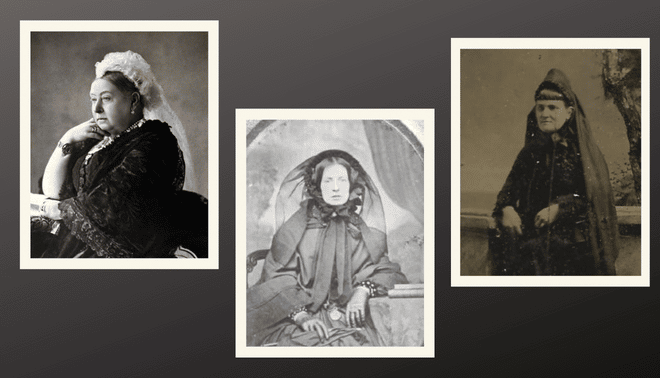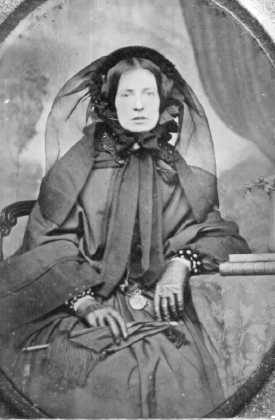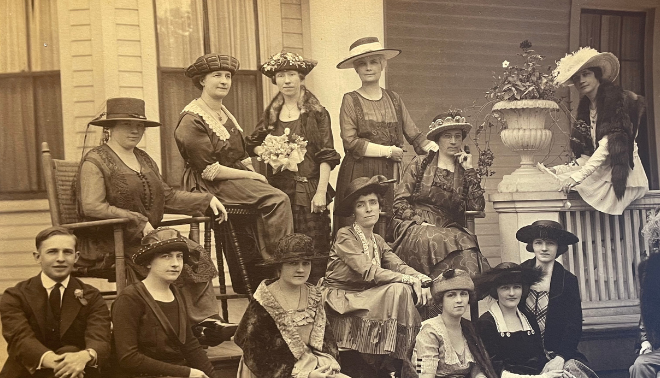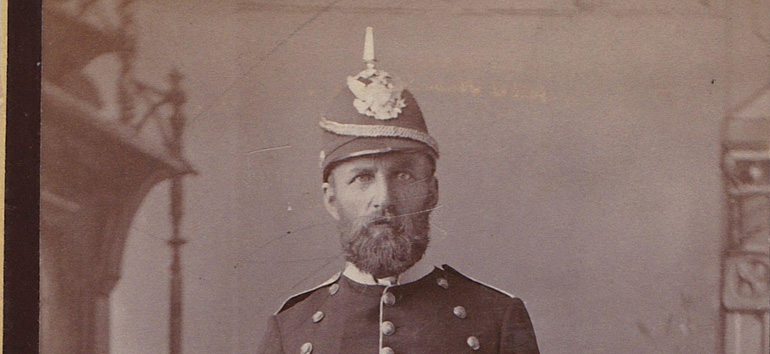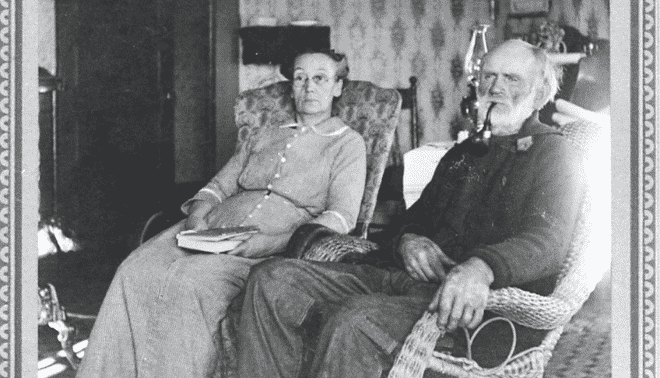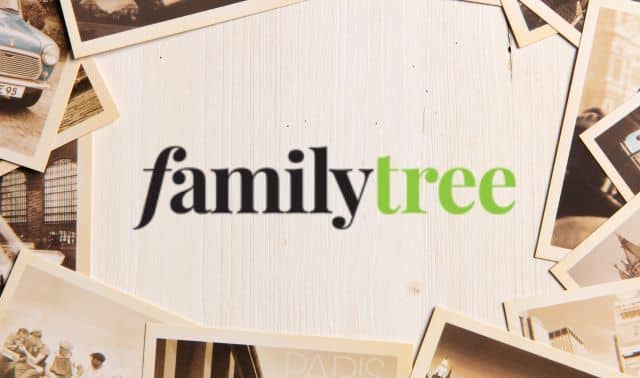Sign up for the Family Tree Newsletter Plus, you’ll receive our 10 Essential Genealogy Research Forms PDF as a special thank you!
Get Your Free Genealogy Forms
"*" indicates required fields
Queen Victoria set the standard for both wedding attire and for mourning. After the death of Prince Albert in 1861, she wore black mourning clothes for the rest of her life. In the Victorian era, men would wear a black armband when someone died, but women wore full black crape (the 19th century spelling for crepe) dresses for a year and a day. Then they wore just crape-trimmed black dresses for another 21 months. (Tortora and Eubank, Survey of Historic Costume, 348).
But what if your family didn’t have the resources of the woman depicted above? A wardrobe of mourning clothes probably wasn’t economically feasible. Instead, clothes could be rented or borrowed for the funeral. According to the 1877 article by Henry R Hatherly, “Mourning Clothes as a Source of Infection” (Sanitary Record: A Journal of Public Health, Google Books), less-fortunate folks were spreading disease by wearing clothing worn by others—in particular, skin and parasitic diseases.
Examples of Victorian Mourning Clothing
This portrait depicts Queen Victorian in mourning shortly after the death of Prince Albert in 1861. In later years she would continue to wear gowns with minimal decoration and crape details.
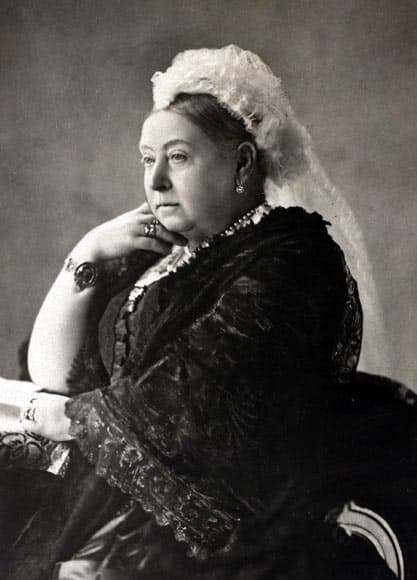
Not just Queen Victoria’s subjects followed mourning customs. This 1880s tintype from Dresden also likely depicts a woman in mourning, suggested by the dark clothing and the large hat with long, heavy fabric at the back. The style of the hat is a bit unusual. I think the browband helps keep the hat on her head.
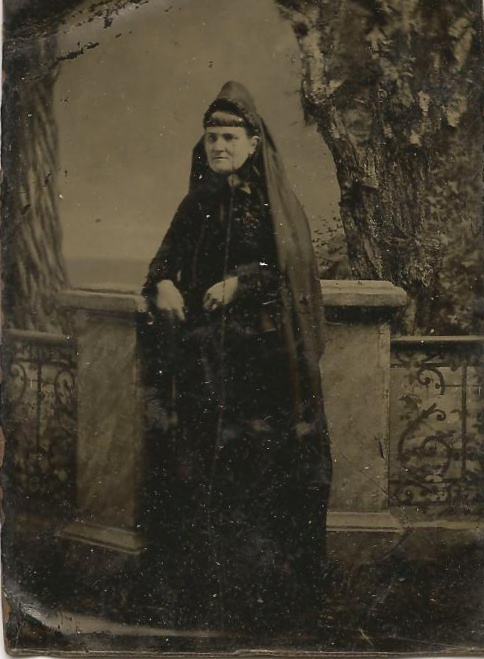
Ten years ago, I analyzed a photo sent to me from a woman in New Zealand. In the New Zealand Mystery, I discussed the family information, but also described her clothing and how it indicated she was in mourning. Every item she is wearing is dark, including her collar and cuffs. This extreme lack of color would be worn for at least the first year after her husband’s death.
How to Spot Mourning Clothes
Mourning clothes can lead you to death information, and vise versa. Spot evidence of mourning clothes in your family photos by watching for the following:
- a woman wearing jewelry, such as a brooch or pendant, made with hair and featuring a photo
- a photo featuring dead flowers or arrangements of flowers with a picture in the center.
- a person holding a photograph of a person who has died.
- a woman dressed in black, but this is tricky. Dark colors and even some bright ones, like orange, appear black in old photos. And our ancestors might wear other colors while mourning. Some mourners wore lavender, depending on their relationship to the deceased.
If you’re not sure whether you have a postmortem photograph, look for death records, newspaper obituaries or a mention in a family document dating from the same time as the photo.
Learn more about photo sleuthing by visiting Maureen’s blog, as well as browsing her posts on our website.
Last updated: October 2022
Related Reads
ADVERTISEMENT

